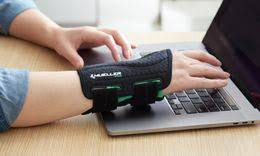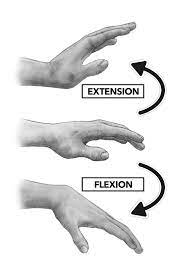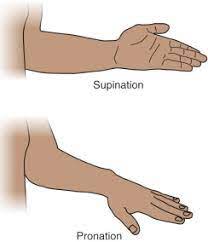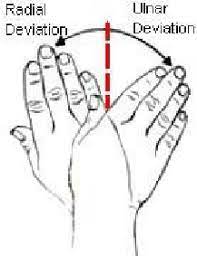If you are one of the many people who suffer from radial tunnel syndrome, you know how painful and frustrating it can be. This condition affects the muscles and nerves in your arm, making everyday tasks like brushing your teeth or tying your shoes a challenge. A radial tunnel syndrome brace can help relieve some of the pain and discomfort associated with this condition. In this blog post, we will discuss the different types of braces available and help you choose the right one for you!
Contents
What Is a Radial Tunnel Syndrome?

Radial tunnel syndrome (RTS) is a condition that causes pain in the forearm. It is caused by compression of the radial nerve, which runs from the shoulder to the hand. The radial nerve controls the muscles that extend the wrist and fingers. RTS can cause pain, numbness, tingling, or weakness in the forearm and hand.
There are two types of radial tunnel syndrome:
- Primary RTS: This type of RTS is caused by a structural problem with the nerve, such as a tumor or an injury.
- Secondary RTS: This type of RTS is caused by repetitive motions of the forearm, such as those often used in sports or work. Secondary RTS is also called occupational radial tunnel syndrome or athletic radial tunnel syndrome.
Is There A Brace For Radial Tunnel Syndrome?
There is no definitive answer to this question. Some patients may find that a brace helps to relieve their symptoms, while others may not. The best way to determine if a brace is right for you is to speak with your doctor or orthopedic specialist. They will be able to assess your individual case and make a recommendation based on your specific needs. This can help stabilize the area and take pressure off the nerve. A night splint can also help by keeping the wrist extended and taking pressure off of the nerve. The brace will help stabilize the area and take pressure off the nerve.
A brace is one possible treatment for radial tunnel syndrome. This type of device can help to stabilize the affected area and relieve pressure on the compressed nerve.
How One Can Choose Radial Tunnel syndrome For Brace?
When choosing a radial tunnel syndrome brace, it is important to select one that is comfortable and fits well. The brace should not be too tight or too loose. It should also be easy to put on and take off. You may want to consider a brace that has adjustable straps so that you can customize the fit.
To choose a brace for Radial Tunnel syndrome. They are as follows:
1. Decide the purpose of wearing a brace. For example, are you trying to relieve pain, stabilize the joint, or both?
2. Consider your lifestyle and activities. If you are active, you will need a different type of brace than someone who is sedentary.
3. Choose a brace that is comfortable and easy to use. You should be able to put it on and take it off without difficulty.
4. Make sure the brace fits well. It should not be too tight or too loose.
5. Adjust the straps as needed to achieve a comfortable, customized fit.
6. Wear the brace as directed by your doctor or physical therapist.
7. Remove the brace when you are not actively using it.
8. Store the brace in a dry, cool place when you are not wearing it.
9. Inspect the brace regularly for signs of wear and tear.
10. Replace the brace as needed to ensure a comfortable, effective fit.
5 Important Benefits Of Braces For Radius Tunnel Syndrome
There are five important benefits of radius tunnel syndrome:
Relief from symptoms
The primary benefit of braces is the relief they can provide from the symptoms of radius tunnel syndrome. This includes reducing pain, numbness, tingling, and weakness in the affected hand and fingers.
Improved function
Braces can also improve function in the affected hand and fingers. This can make it easier to perform daily activities, such as grasping objects or writing.
Prevention of further injury
By stabilizing the bones and soft tissues in the affected area, braces can help prevent further injury to the hand and fingers. This can ultimately help preserve range of motion and prevent deformity.
Support for healing
After an injury or surgery, braces can provide support for the healing process. This helps ensure that the bones and soft tissues heal in the proper alignment, which can minimize the risk of complications.
Enhanced appearance
In some cases, braces can also enhance the appearance of the affected hand and fingers. This is often a desired outcome for those who have radius tunnel syndrome due to an injury or birth defect.
If you are considering braces for radius tunnel syndrome, it is important to discuss the potential benefits and risks with your doctor. While braces can offer many benefits, there are also some potential risks and side effects associated with their use. Therefore, it is important to weigh the pros and cons of braces before making a decision.
What Are The Various Alternatives Other Than Braces?

There Are Various alternative options:
Physical Therapy
A physical therapist can help to strengthen the muscles around the nerve and reduce inflammation. For example,
Exercises
Exercises may be prescribed to help stretch and strengthen the muscles in the forearm. Surgery is only recommended if conservative treatments do not provide relief.
Wrist Extension

Sit with your forearm resting on a table and your hand hanging over the edge. Use your other hand to gently pull your fingers back toward your body. Hold for 30 seconds and repeat 3 times.
Flexor Stretch

Sit with your legs outstretched in front of you and your back straight. Place your affected arm across your body at chest level, with your elbow bent and your hand pointing toward the floor on the opposite side of your body. Use your other hand to grasp your affected forearm just below the elbow and pull it gently across your body until you feel a stretch in the muscles on the inside of your forearm. Hold for 30 seconds, then release and repeat 3-5 times.[5]
Pronation/Supination

Sit or stand with your affected arm at your side and your elbow bent to 90 degrees, with your palm facing up. Slowly turn your hand so that your palm faces down (pronation), then back up to the starting position (supination). Repeat 10-15 times.[6]
Wrist curls
Sit with your forearm resting on a table, palm up. Use your opposite hand to hold a lightweight (2-5 pounds). Slowly curl your wrist up and then back down. Repeat 10 times.
Reverse wrist curls

Sit with your forearm resting on a table, palm down. Use your opposite hand to hold a lightweight (2-5 pounds). Slowly curl your wrist up and then back down. Repeat 10 times.
Flexor/extensor stretching

Sit with your forearm resting on a table, palm down. Use your other hand to gently pull the fingers back towards the center of the palm. Hold for 30 seconds. Repeat with the other hand.
Radial/ulnar deviation

Sit with your forearm resting on a table, palm up. Use your other hand to hold the pinkie and thumb down while raising the remaining fingers. Hold for 30 seconds. Repeat with the other hand.
If you have radial tunnel syndrome, these exercises can help stretch and strengthen the muscles and tendons around the affected nerve. You should feel a gentle stretch, not pain. If you experience pain, stop the exercise and consult your doctor.
Massage
Radial tunnel syndrome is a condition that causes pain in the forearm. The radial nerve runs from the shoulder to the hand, and when it becomes compressed, it can cause pain, numbness, and weakness in the forearm. A radial tunnel syndrome brace can help to relieve these symptoms by providing support and stability to the forearm. Massaging the forearm with a radial tunnel syndrome brace can also help to improve circulation and reduce inflammation.
Surgery
Surgery is another treatment option, but it’s usually only considered if other treatments haven’t worked. If you have radial tunnel syndrome, your doctor may recommend wearing a brace. This device stabilizes the affected area and takes pressure off the nerve.
Surgery is sometimes needed to release the pressure on the nerve. This procedure is called decompression surgery. It’s usually done as an outpatient procedure, so you won’t need to stay in the hospital overnight.
Recovery from radial tunnel syndrome surgery can take several weeks. You may need to wear a splint or brace for a few weeks to keep the affected area from moving too much. You’ll likely need physical therapy to help you regain strength and range of motion in your arm. Surgery carries a risk of complications, such as infection, nerve damage, and blood clots.
Be sure to talk to your doctor about all the risks and benefits of surgery before you decide if it’s the right treatment for you.
Pain Medications
These can help to control pain and inflammation. It helps in reducing radial tunnel syndrome pain.
There are different types of medications that can be used for radial tunnel syndrome, such as:
NSAIDs (nonsteroidal anti-inflammatory drugs): These medications help to reduce pain and inflammation. They can be bought over the counter or by prescription. NSAIDs include ibuprofen (Advil, Motrin) and naproxen (Aleve).
Corticosteroids: These are anti-inflammatory medications that can be injected into the area around the nerve to help reduce pain and inflammation.
Analgesics: These are pain medications that can be used to help control pain. Analgesics include acetaminophen (Tylenol) and tramadol (Ultram).
Herbal Remedies
There are many herbal remedies that can help to ease the pain of radial tunnel syndrome. Some of these herbs include:
Ginger: Ginger is a popular herb that has been used for centuries to treat various ailments. It contains anti-inflammatory properties that can help to reduce inflammation and pain.
Turmeric: Turmeric is another herb that has powerful anti-inflammatory properties. It can help to reduce swelling and pain associated with radial tunnel syndrome.
Devil’s Claw: This herb is native to Africa and has been used traditionally to treat pain and inflammation. It contains compounds that can help to reduce inflammation and pain.
Feverfew: Feverfew is an herb that has been used for centuries to treat various ailments. It contains compounds that can help to reduce inflammation and pain.
White willow bark: White willow bark is an herb with compounds that can help reduce pain and inflammation. It has been used traditionally for centuries to treat various ailments.
Cayenne pepper: Cayenne pepper is an herb that contains capsaicin. Capsaicin is a compound that can help to reduce pain and inflammation.
These are just a few of the many herbs that can be used to treat radial tunnel syndrome. If you are interested in trying an herbal remedy, talk to your doctor first to make sure it is safe for you.
Conclusion
It may be concluded that a radial tunnel syndrome brace is an effective treatment option for this condition. More research is needed to confirm these findings. A study with a larger sample size or a different study design would provide additional evidence to support the use of this treatment.
Physical Therapy help patients recover from pain. If you’re experiencing Back pain, Shoulder pain, Knee pain, Neck pain, Elbow pain, Hip pain, or Arthritis pain, a physical therapist at MantraCare can help: Book a physiotherapy session


